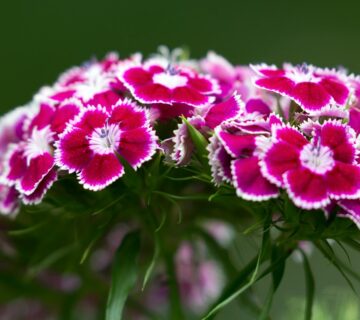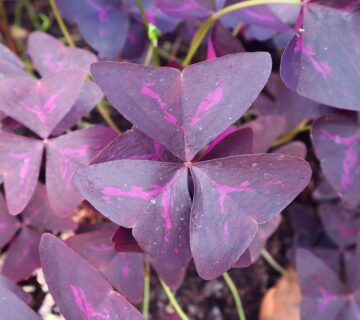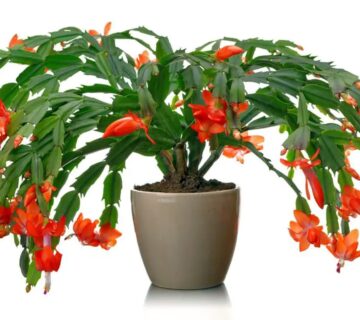Sunflower
Sunflowers, scientifically known as Helianthus annuus, are one of the most iconic, recognizable flowers worldwide and are known for their bright yellow petals and large size. They are native to North America and have become popular worldwide for their beauty, versatility and are a significant crop for their seeds and oil.
Description:
Sunflowers are known for their large, circular heads and bright yellow petals resembling the sun. Depending on the variety, they can grow from 5 to 12 feet tall. The flower head is made up of thousands of tiny florets, which can turn into seeds.
Types of Sunflowers:
Common Sunflower (Helianthus annuus): The most well-known type, with large yellow flowers and dark centres. It can grow up to 10 feet tall.
Dwarf Sunflower: Compact varieties ideal for smaller gardens or container planting.
Teddy Bear Sunflower: A dwarf variety with fluffy, double-petaled flowers resembling pom-poms.
Red Sunflower: These sunflowers have deep red petals instead of the traditional yellow colour.
Velvet Queen Sunflower: This variety has dark burgundy petals that fade to bronze as they age.
Growing Sunflowers:
Sunflowers are annual plants that complete their life cycle in one growing season.
Choose a sunny location with well-drained soil. Sunflowers require at least 6 to 8 hours of direct sunlight per day.
Sow the seeds directly into the soil after the last frost date in your area. Plant the seeds 1 to 2 inches deep and 6 to 12 inches apart, depending on the variety.
Water the plants regularly, keeping the soil consistently moist but not soggy.
As sunflowers grow, they may need support. Consider staking taller varieties or using a trellis to prevent them from falling over.
Sunflowers generally take around 70 to 100 days to mature and start blooming.
Sun Tracking:
Young sunflowers exhibit a unique behavior called heliotropism, or sun tracking. During the day, the flower buds and young blossoms will face the sun as it moves across the sky. However., mature sunflowers stop this behavior and remain facing east.
Varieties:
There are over 70 different varieties of sunflowers. They come in various sizes and colours, including yellow, orange, red, and brown. Some popular varieties include the Russian Giant, which can grow up to 15 feet tall, and the Teddy Bear, a dwarf variety that only grows to about 2 feet tall.
Uses:
Sunflowers are grown commercially for their seeds and oil. Sunflower seeds are a popular snack, and the oil is used in cooking and manufacturing. Sunflowers are also used in the production of biodiesel. In addition, they are often used in floral arrangements and for decorative purposes.
Health Benefits:
Sunflower seeds are rich in Vitamin E, a powerful antioxidant, and also contain phytosterols, which can help lower cholesterol. They are also a good source of magnesium and selenium.
Symbolism:
Sunflowers symbolize adoration, loyalty, and longevity. They are often associated with the sun and are seen as a symbol of warmth, happiness, and positivity.
Pests and Diseases:
Sunflowers can be susceptible to various pests and diseases, including birds, squirrels, sunflower beetles, and fungal diseases. However, they are generally hardy and withstand the most common garden problems.
Planting:
Sunflower seeds should be planted 1 inch deep and about 6 inches apart after the danger of frost has passed. They usually germinate in 7 to 10 days and bloom in 2 to 3 months.
Harvesting:
Sunflower seeds are ready to harvest once the back of the flower head turns brown. The seeds can be easily removed with a stiff brush or rubbed with your hand.
Things to know about Sunflower
Common (vernacular) Name
विंका (Hindi), Vinca, Sadabahar, Madagascar Periwinkle, Catharanthus Roseus, Nityakalyani, Bara Massi, Bright Eyes, Cape periwinkle, Graveyard Plant, Old maid, Pink Periwinkle, Rose Periwinkle, and many more.
Botanical Name
Catharanthus roseus
Origin
Island of Madagascar
Family
Apocynaceae
Plant Type
Tropical plant
Plant Features
Ornamental / Evergreen / Exotic
Life Cycle
Perennial
Landscape Uses
Container, Walkways, Ground Cover, Mass Planting and Houseplants.
Species
Apricot Cooler Improved, Aztec Pink Magic, Blue Pearl, Cascade Beauty White, Cooler Icy Pink, Cooler Orchid, Cooler Peppermint, Cora Burgundy, Cora Cascade Cherry, Cora Cascade Strawberry, Cora Red, Experimental Dee, Jams and Jellies, Mediterranean Lilac, Mediterranean XP Cherry Halo, Mediterranean XP Rose Halo, Nirvana Pink Blush, Nirvana Red, Nirvana Sky Blue, Nirvana Violet, Pacifica White, Sunshower Lilac, Titian Icy Pink
Varieties
It comes with more than 30 varieties in various leaf and flower colourations.
Size
Height : 1 to 1.5 feet tall and Width : 1 foot wide when mature.
Indoors or Outdoors
Outdoors : Anthurium can be used outdoors in shady plantings; avoid direct sunlight.
Indoors : Excellent plant growth in bright light or indirect light. Best indoor plants for beginners.
Blooming / Flowering
The blooming period is throughout the year.
Flower Colour
It’s come in Pink, White, Purple, Red and Multicoloured.
Lucky Plant
According to Feng Shui, It brings Good Luck in your relationships.
Lighting / Sun Exposure
Bright Indirect Sunlight.
Temperature
Grow best in warm temperatures above 21°C and tolerate max temp. as high as 32°C.
Growth Rate
Anthurium is a slow to moderate grower plant.
Watering
Moderate watering, Mist or overhead sprinkler to provide water and to improve relative humidity. Do not tolerate overwatering, It can cause root damage and leaf yellowing.
Fertilizer
Applying slow-release fertilizer or a water-soluble liquid fertilizer once or twice during the growing season (from spring to summer) is recommended.
i.e., - Cow dung, DAP, Compost, NPK 30-10-10 fertilizer, liquid organic fertilizer etc.
Pruning
Pruning of Anthurium, little is needed. However, trimming away only discoloured or dead leaves.
Propagation
Seeds : The best time to sow your Anthurium seeds is at the end of Winter / early Spring, but it can't give good results.
Stem Cuttings : The easier propagation methods of Anthurium in water or soil via stem cuttings can be done during the warm growing season.
Division : The division of Anthurium can be done in the Rainy season or, better, from February to March.
Dormancy Period
Month : November to February (winter season)
Shed their leaves and show poor growth, Watering minimally.
Avoid : Propagate, Fertilize and Repotting.
Container
Ceramic Pot, Plastic Pot, Terracotta or Clay Pot is preferred, which ensures good drainage and water holding capacity.
Soil Type
A well-drained Loam / Coarse potting soil and water-holding capacity are recommended. Prevent soggy potting medium.
Our recommendation for the potting mix: Equal part mixture of Garden Soil (25%) + Compost (25%) + River Sand (25%) + Cocopeat (25%). You can substitute pieces of Charcoal, Vermicompost, Perlite etc.
Soil pH
Lightly Acidic soil - Ideally, 5.5 to 6.5 pH (potential of hydrogen) is recommended for Anthurium.
Repotting
It is advisable to repot the Anthurium every year or two, preferably during the spring to midsummer season.
Maintenance
Low maintenance and easy to grow.
Properties
The plant poses toxicity risks to both humans and pets if ingested.
Benefits
Excellent indoor air purifier, Anthurium plants turn CO2 into oxygen. It purifies indoor air by removing harmful chemicals like ammonia, toluene, xylene and formaldehyde.
Special Features
It does not attract hummingbirds and pollinators in the same way it does butterflies, bees, or wasps.
Infestation / Pests
Aphids, Scale insects, Thrips, Mealybugs, Spider mites, caterpillars etc.
Diseases / Problem
Physiological Problem : Anthracnose, Leaf Spot and Powdery Mildew.
Bacterial Problem : Bacterial Blight, Bacterial Wilt and Black Nose Disease.
Fungal Problems : Root Rot and Water Mold.
In conclusion, sunflowers are beautiful and have various uses and health benefits. They are relatively easy to grow and care for, making them popular among gardeners and farmers.
Some Glimpse of Sunflower









No comment